How art saved a former boy soldier’s life
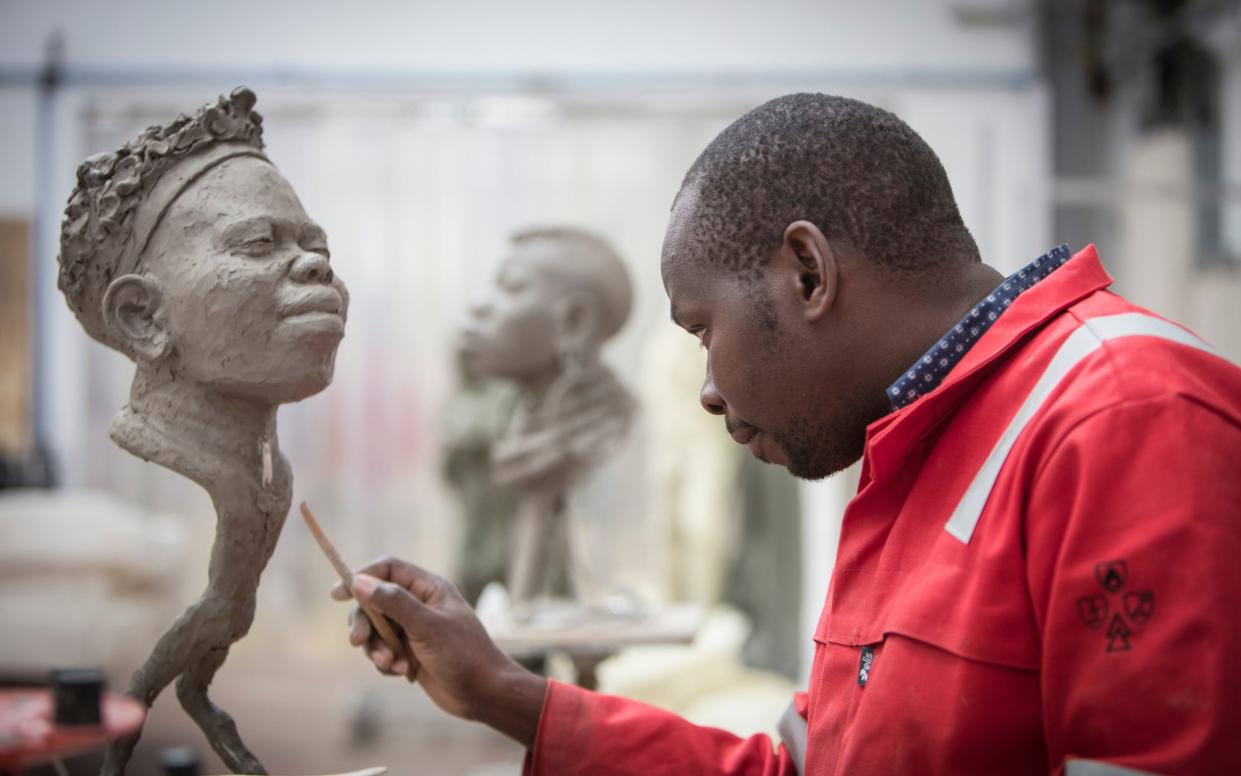
- Oops!Something went wrong.Please try again later.
It is hard to think of a less auspicious background to a career in the arts than that experienced by the young Peter Oloya. Aged just 11 he was abducted by the Lord’s Resistance Army (LRA) in northern Uganda and turned into a rebel boy soldier. But today, at the age of 44, and having turned to art as a means of overcoming those traumatic experiences, he is enjoying his first solo exhibition in the UK in a leading sculpture gallery, conveying ideas of beauty instead.
In 1989, northern Uganda was in the midst of violent upheaval following the Ugandan Bush War between the president Obote’s National Liberation Army and the newly formed rebel LRA who were known for the forced recruitment of thousands of children and adolescents that they trained to fight as soldiers. At the time Oloya and his family had been placed by the government in a displaced persons camp ostensibly for their security from the rebels. Tales are legion of how the LRA conducted revenge killings, burned villages to the ground and left whole communities completely dependent on aid from the World Food Programme.
Oloya described his abduction that year to The Telegraph. He and his mother, his aunt, who was feeding a baby, and his cousin were out harvesting in the garden when “three sweating men appeared from three different directions pointing their rifles at us and telling us not to try and run… one of them rudely ordered for our hands to be tied except for my breast-feeding aunty. My mother’s hands were tied first. I will never forget her look into my eyes when her hands were being fastened.
“The memory of my mother crying while we were being beaten still gives me goose pimples,” he tells me now. Then he had to endure the mental torture of being told, falsely as it transpired, that she had been killed.
“The teaching,” he says, “was rude and crude punctuated by beatings at every failure. The focus was on obedience, use of firearms and “tek cwiny” – bravery to fight. We were all warned against trying to escape as punishable by death. The fear was constant to me, especially when I was separated from my mother.”
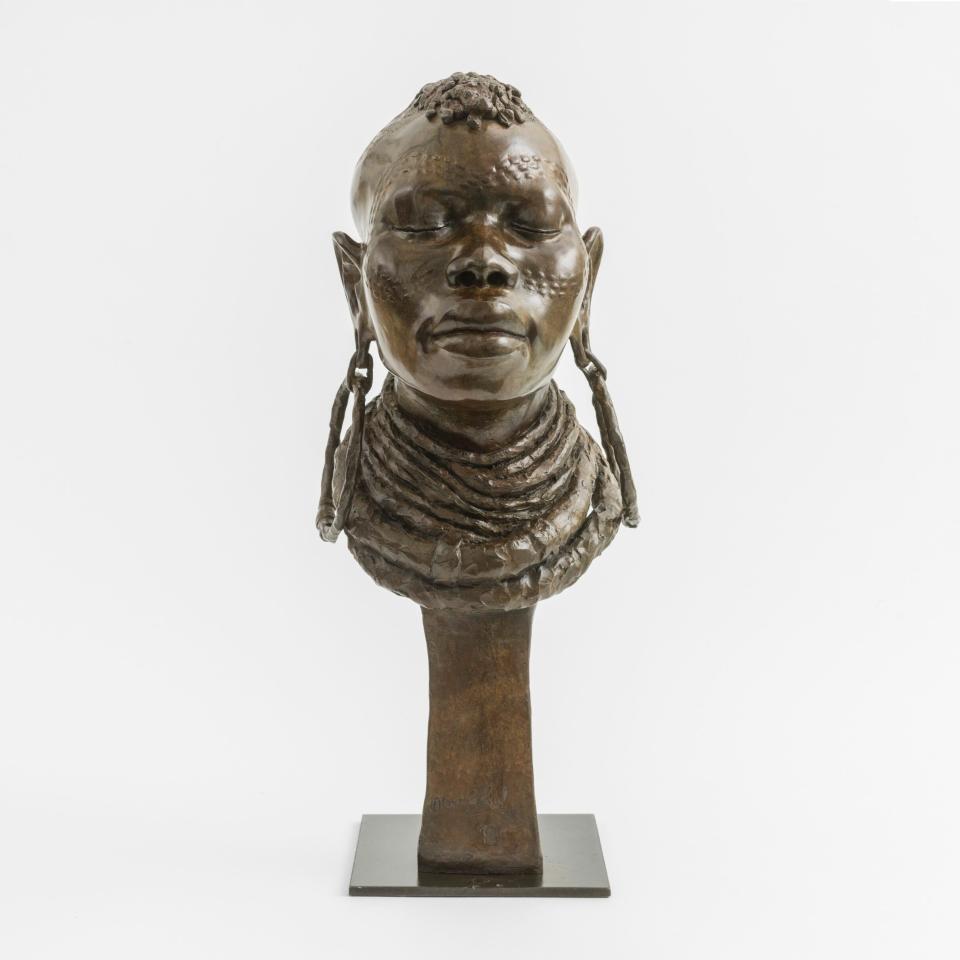
But two years later, wounded in battle, he escaped to make it back to his hometown, Kampala, where he managed to pursue his education and develop artistic skills learned from his grandmother, who was a potter, making toys for sale to pay for his education. He also made money running a mobile disco using dancehall, pop and reggae records he had collected. A chance visit to a smart hotel where sculpture was being sold inspired him to make his own.
Then, in 2003 at a sculpture workshop held by the local Makerere University, he was discovered by Rungwe Kingdon and Claude Koenig of Pangolin, the foundry in Gloucestershire which made bronze casts for eminent artists such as Lynn Chadwick and Damien Hirst, and were setting up the Ruwenzori Sculpture Foundation with the help of the Tate and Royal Academy to promote art and ecological interests in Uganda, providing the first bronze foundry in the country and subsidising a medical clinic. With their encouragement he was commissioned by the Ugandan government to create a sculpture of a crane for Queen Elizabeth 11.
Art, he says, saved his life, so he set up a charity, AFOCOD (Art for Community Development), supported by sales of his art to collectors such as Hirst to provide art therapy for other former child soldiers who had been abducted by the LRA. Later he was commissioned by the BBC to make the African Footballer of the Year trophy.
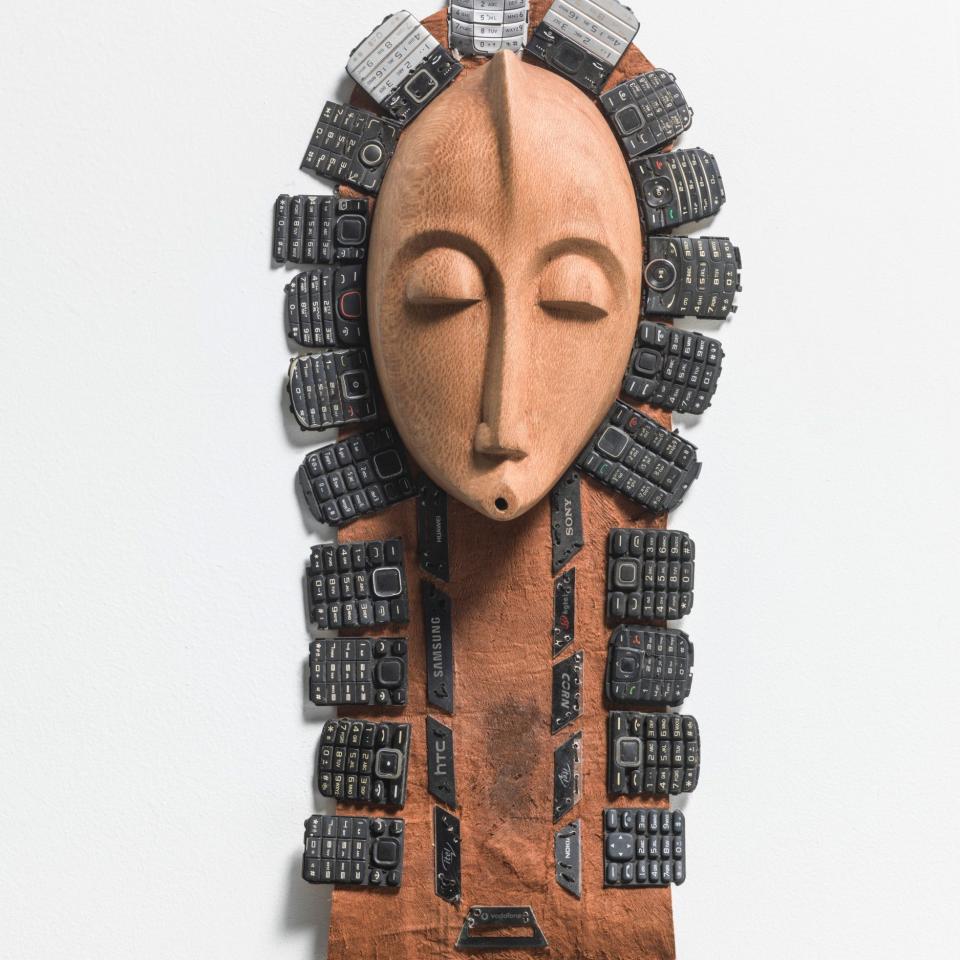
“Art is my reason for living,” Oloya told BBC Swahili. “In fact, it has given a structure to my whole life. I have lived through war and experienced death throughout my early years, and I used art as a kind of therapy to help get me through those difficult times. In fact, it continues to help me to this very day.”
Oloya’s art is a mixture of traditional Acholi and western influences – powerful figurative heads modelled in clay, cast in bronze or carved in wood or marble, with local African elements – exotic shell jewellery, vegetation displaying the effect of climate change, or technological signifiers of the age such as the mobile phone which acts as both status symbol and means of exchange in Africa.
Recently, Pangolin granted Oloya a residency in England and use of its foundry. The results can be seen this month in its London gallery where prices range from £500 to £15,000.
Fill your boots as Elton John’s treasured collection goes up for sale
It’s 24 years since Sir Elton John announced he was going into recovery from alcohol addiction, and 22 since he bought a 13,000 sq ft penthouse in Peachtree Road, Atlanta, close to the Triangle Club which played such a vital role in that process. During that time, Elton filled the apartment with everything from a Damien Hirst heart-shaped Valentine painting ($350,000), a Banksy flower thrower triptych ($1 million), a tapestry by Tracey Emin ($80,000), and an array of classic photos such as Irving Penn’s 1950 black and white Vogue cover ($100,000), many of which were exhibited at Tate Modern’s The Radical Eye exhibition in 2016.
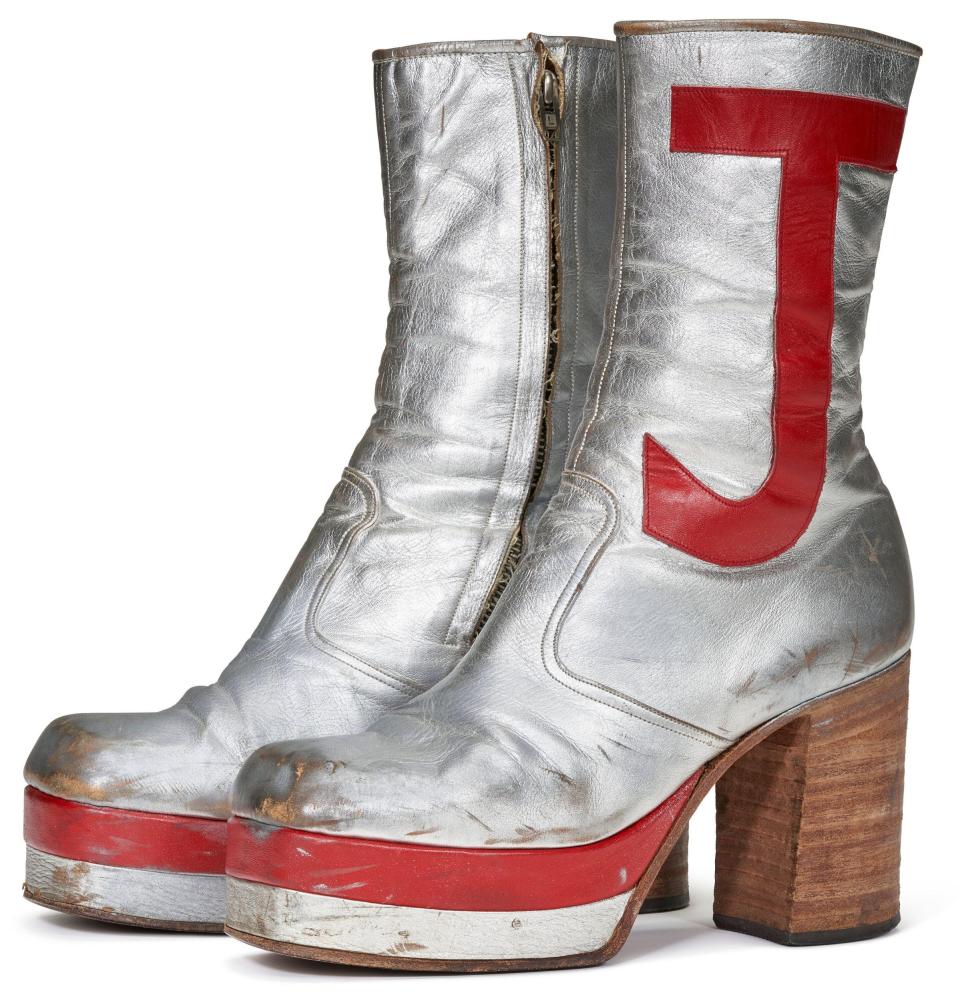
The works are joined by familiar stage props and memorabilia from rainbow-hued sunglasses ($2,000), high-heeled platform boots ($5,000) and a grand piano ($430,000). The apartment was sold last year for $7.2 million and its contents have been split into eight sales from February 21 at Christie’s in New York estimated to bring over $10 million.
Can the Old Masters still turn a new profit for dealers?
According to analysts ArtTactic, the Old Master market survived last year’s downturn better than any other fine art category, with auction turnover down by 4 per cent compared to the fine art market in general at 27 per cent.
Whether that can be sustained must be in doubt after the first major sales of 2024, for Old Masters in New York. Sales at Sotheby’s and Christie’s, estimated to bring at least $40 million, returned just $28 million – 56 per cent down on last year.
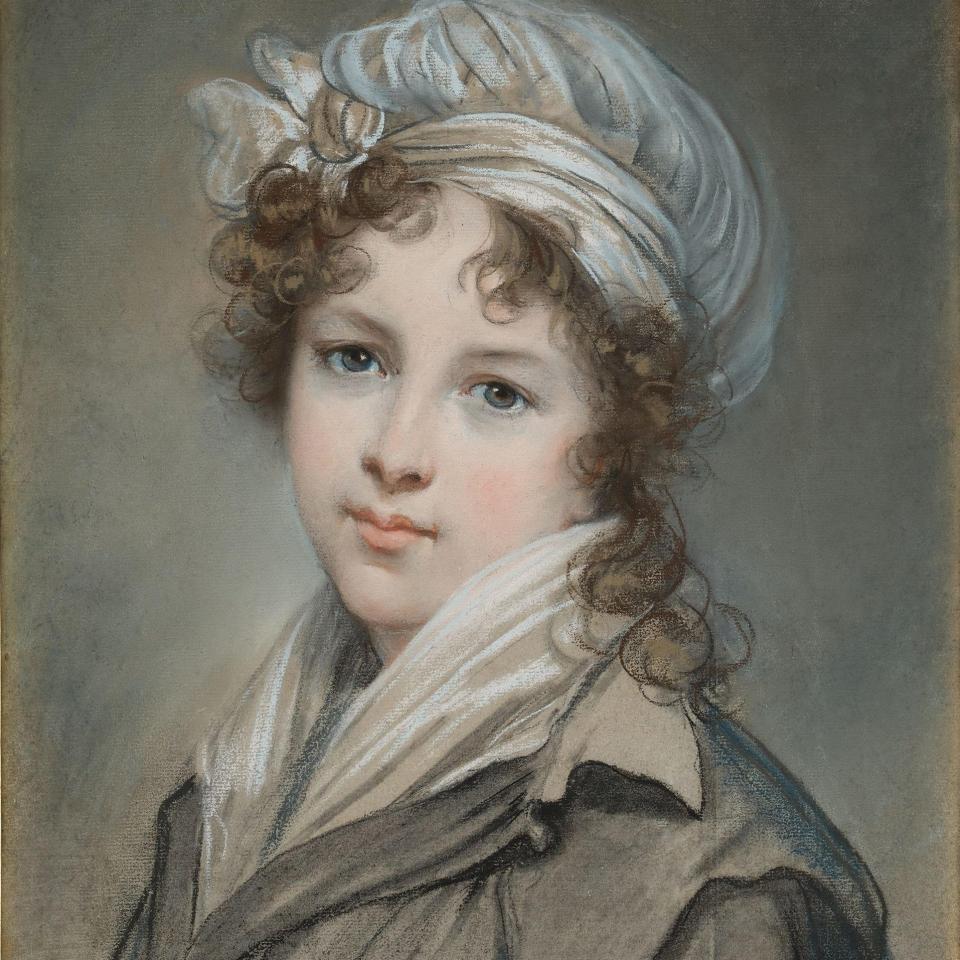
A self-portrait by van Dyck, bought in 2006 for just $2,600, did sell at Sotheby’s for $2 million, but a Rubens portrait, estimated at $3 million, was not sold, while half the lots at Christie’s failed to find buyers. Still, a c1564 bronze sculpture of a sleeping nymph by Giambologna soared four times over estimate to a record $6 million, and a pastel self-portrait by Élisabeth Vigée le Brun, which cost the seller £16,000 in 1984, fetched $3.1 million – a record for a work on paper by any female Old Master.

